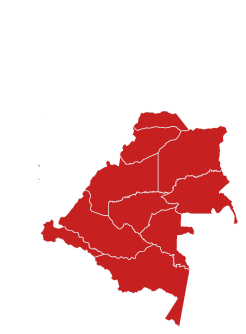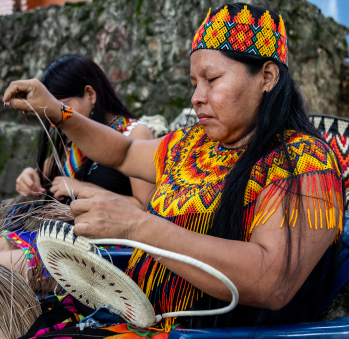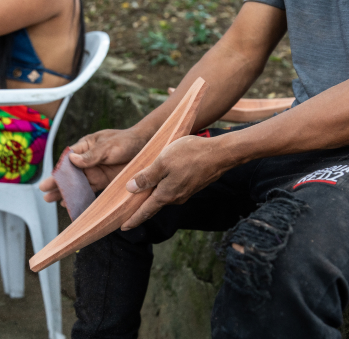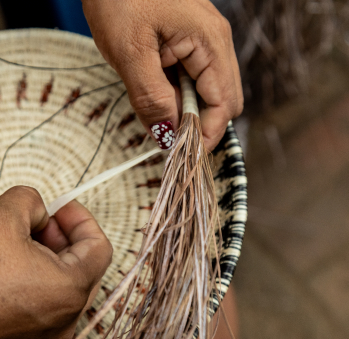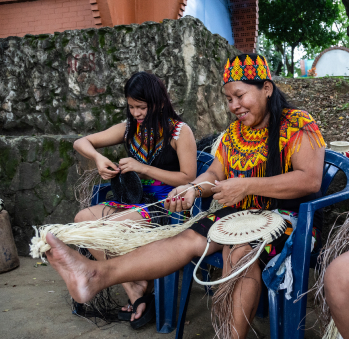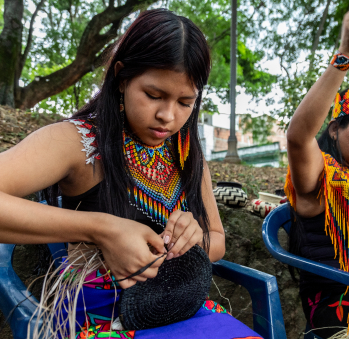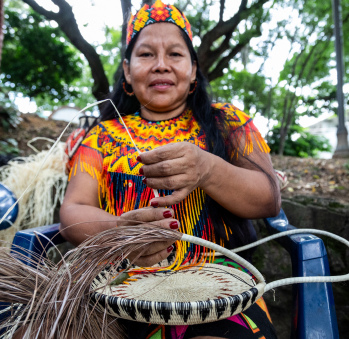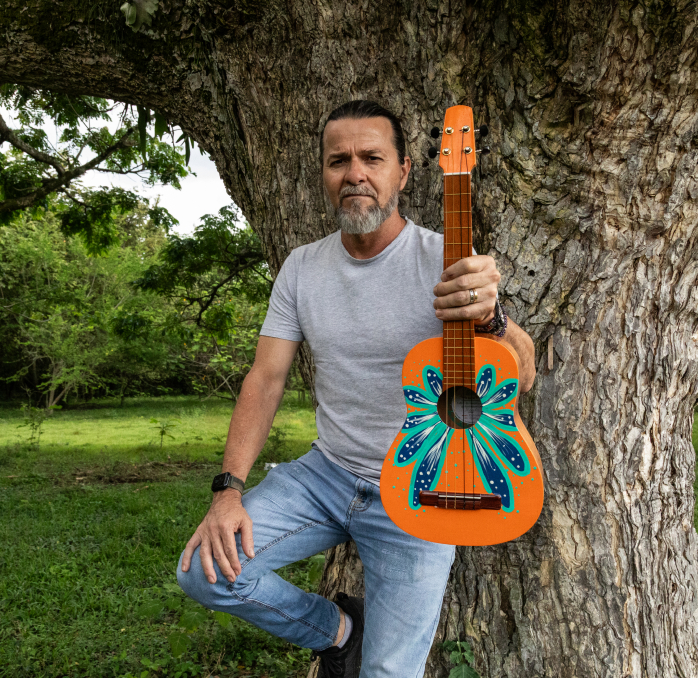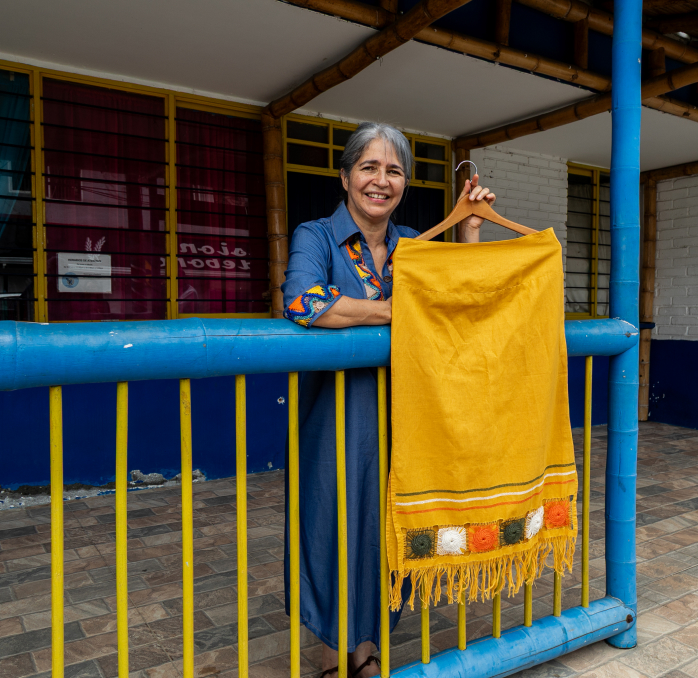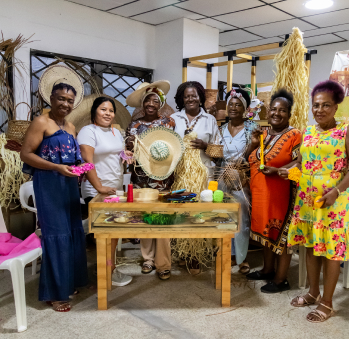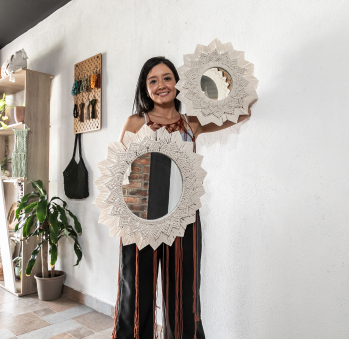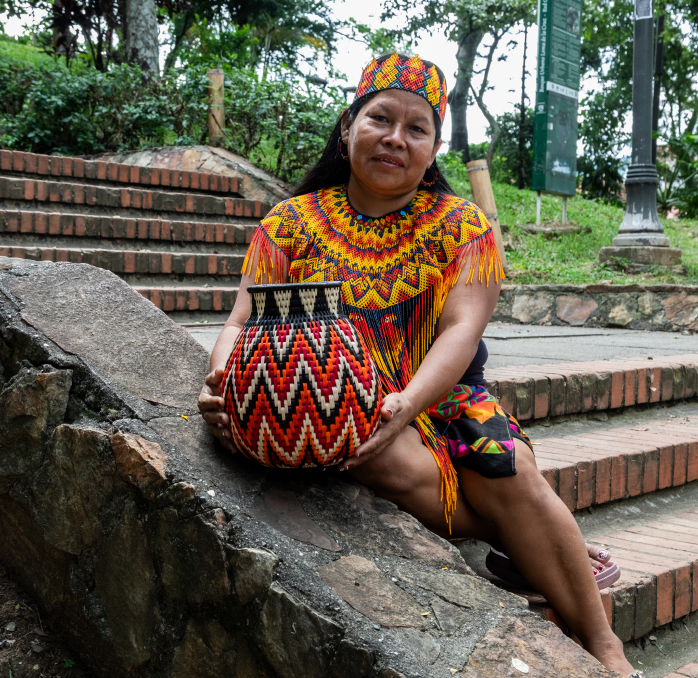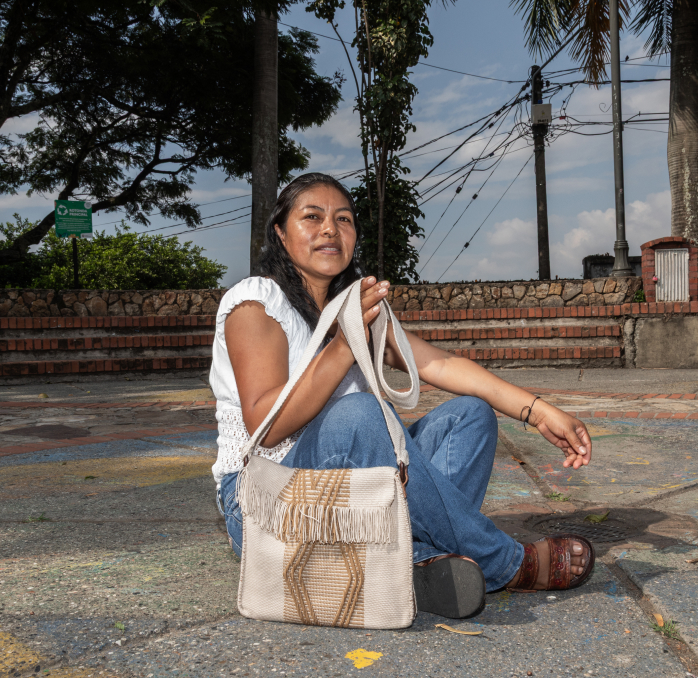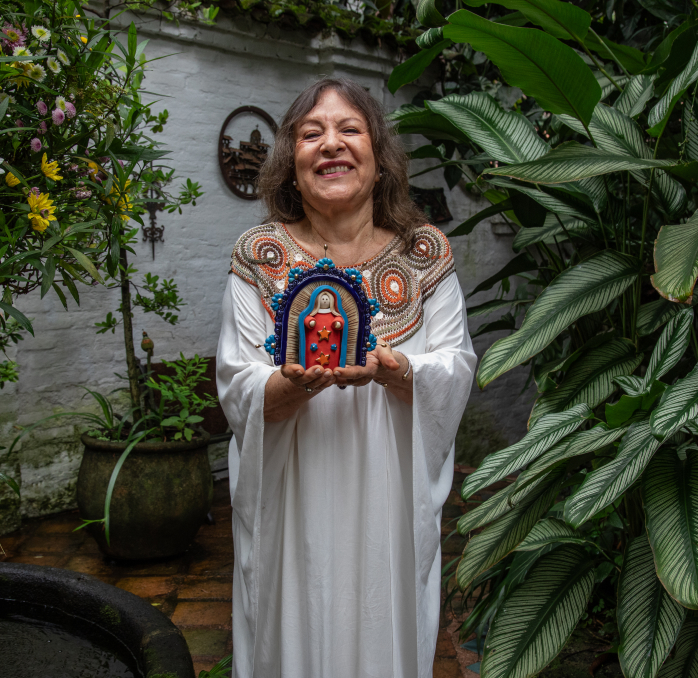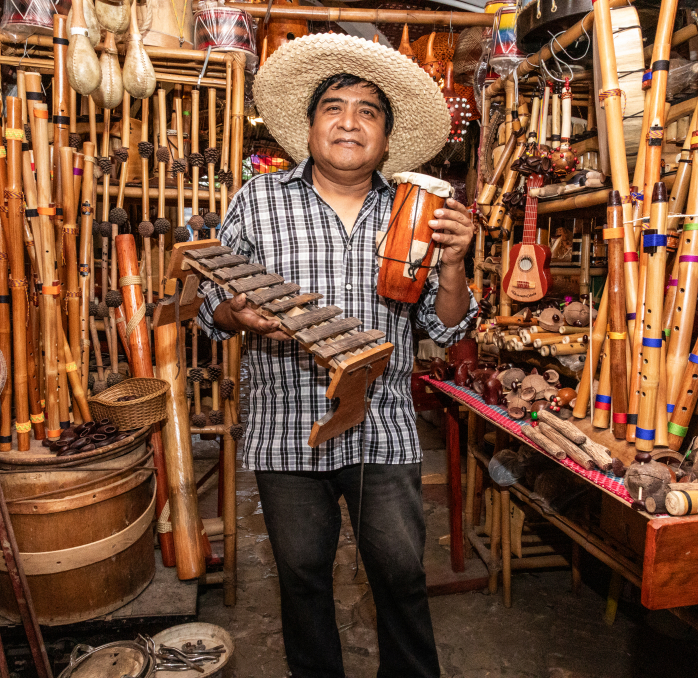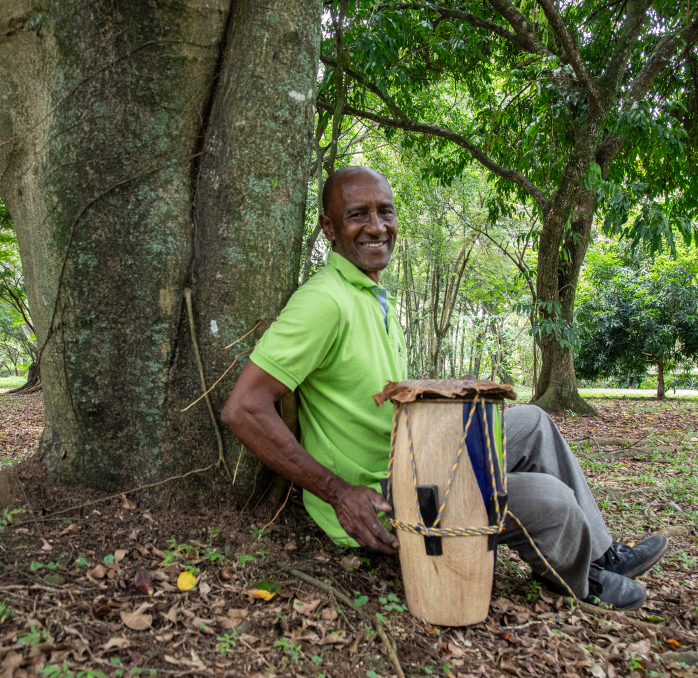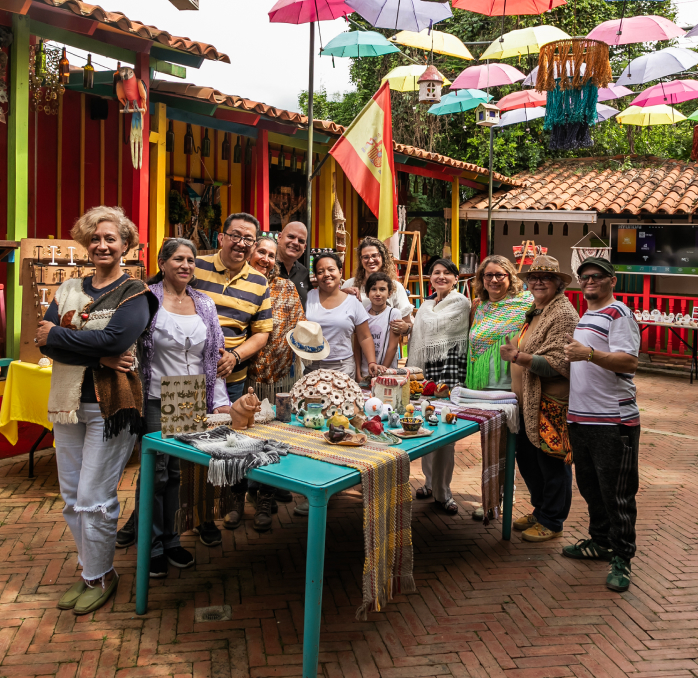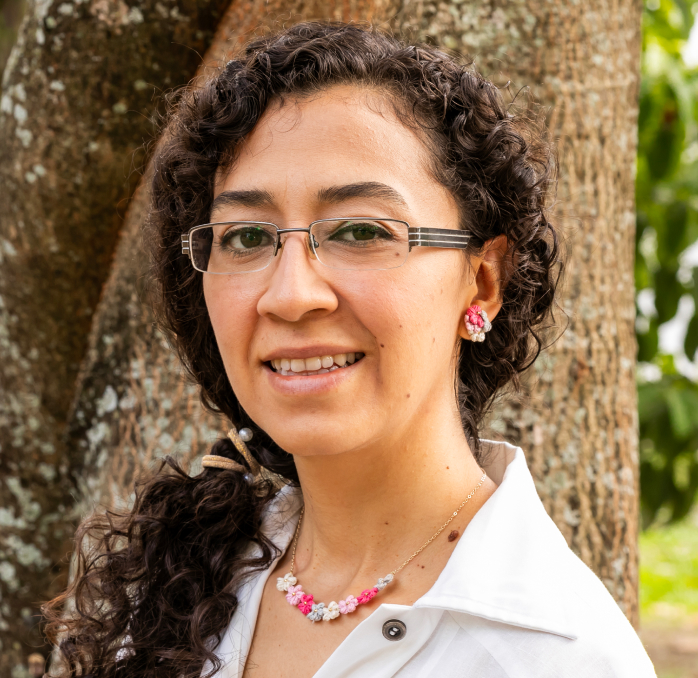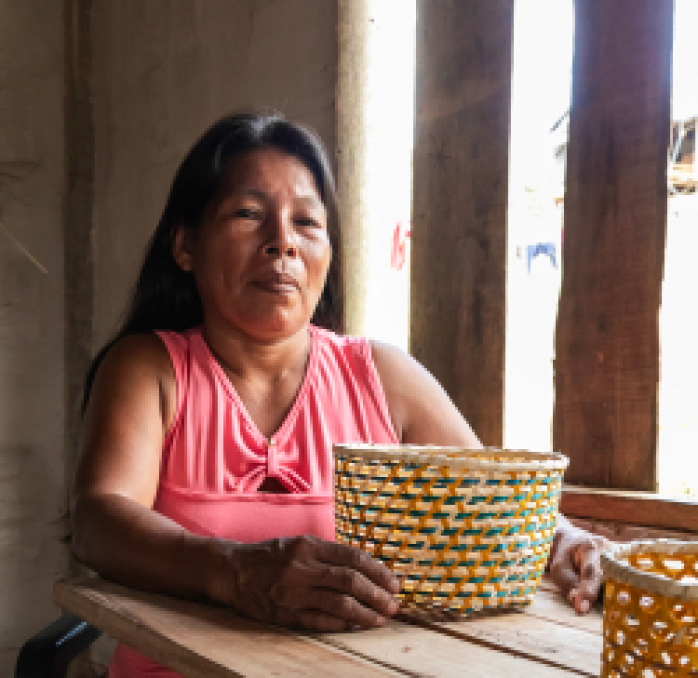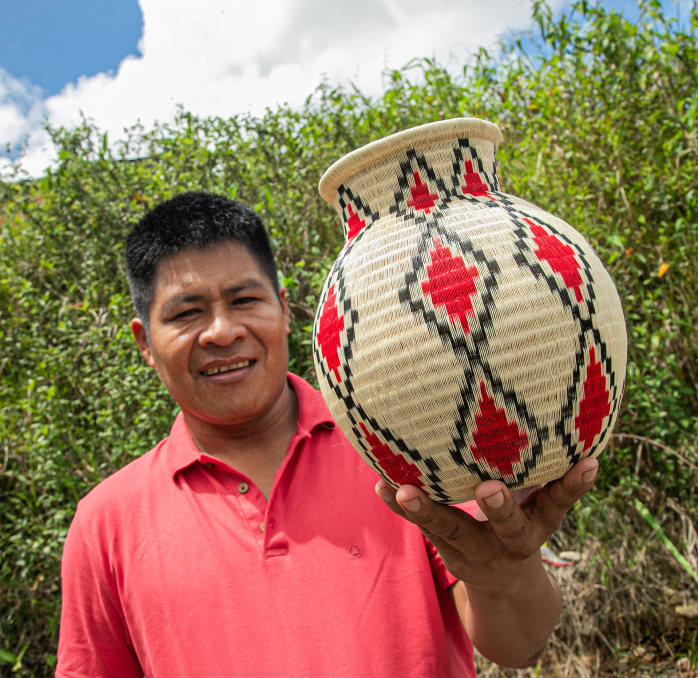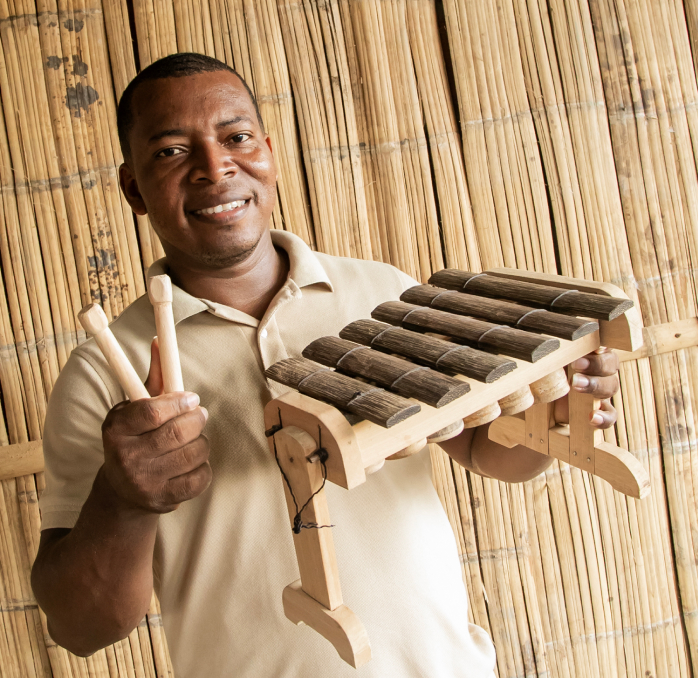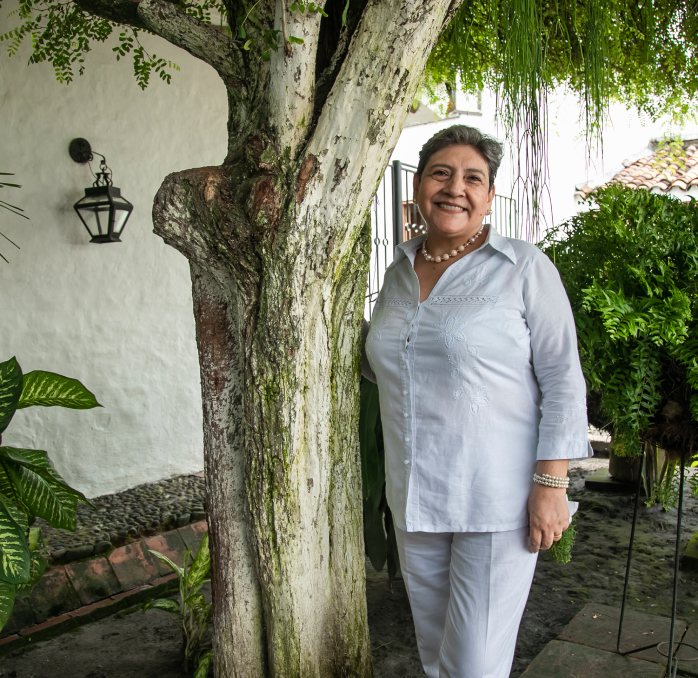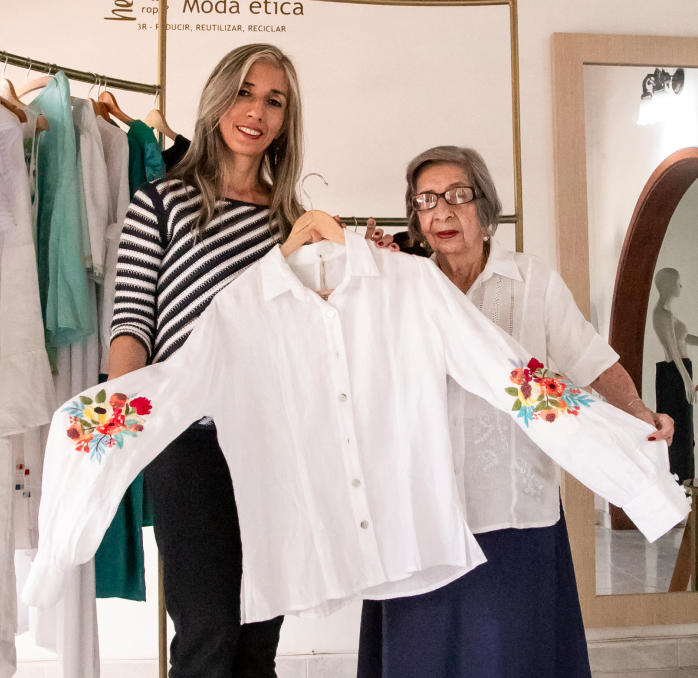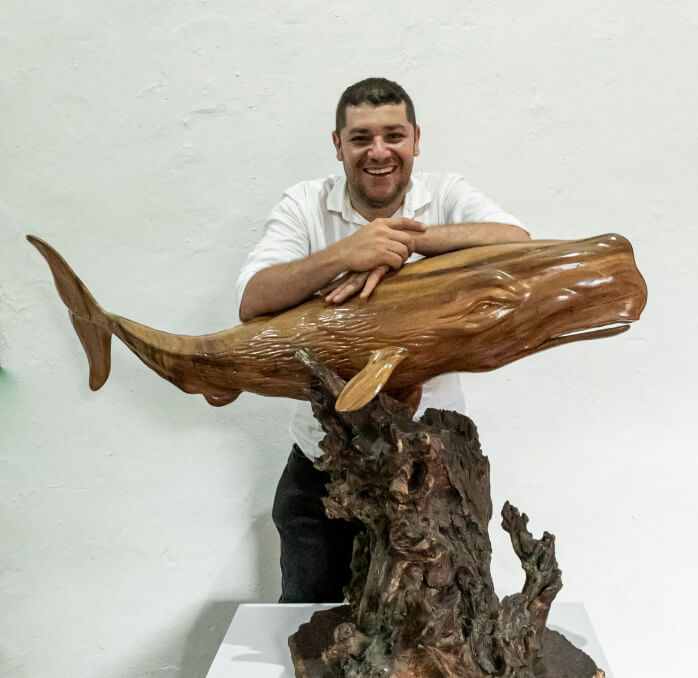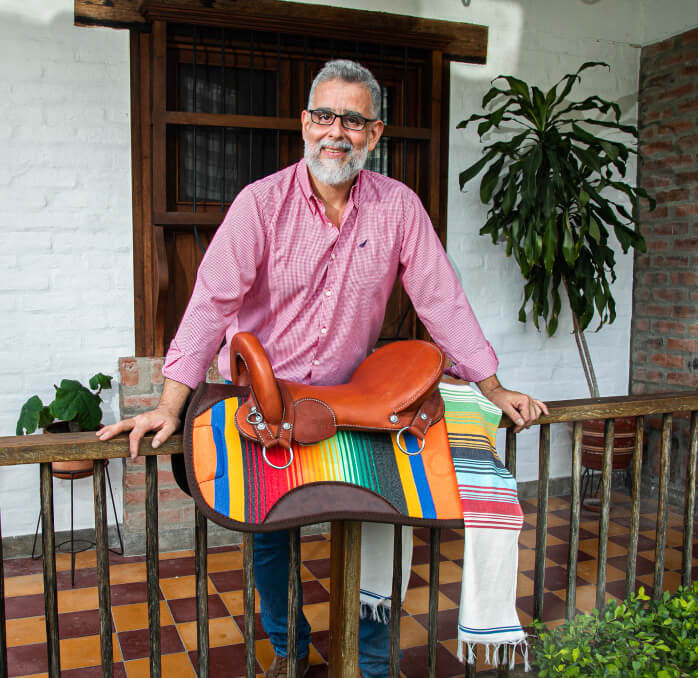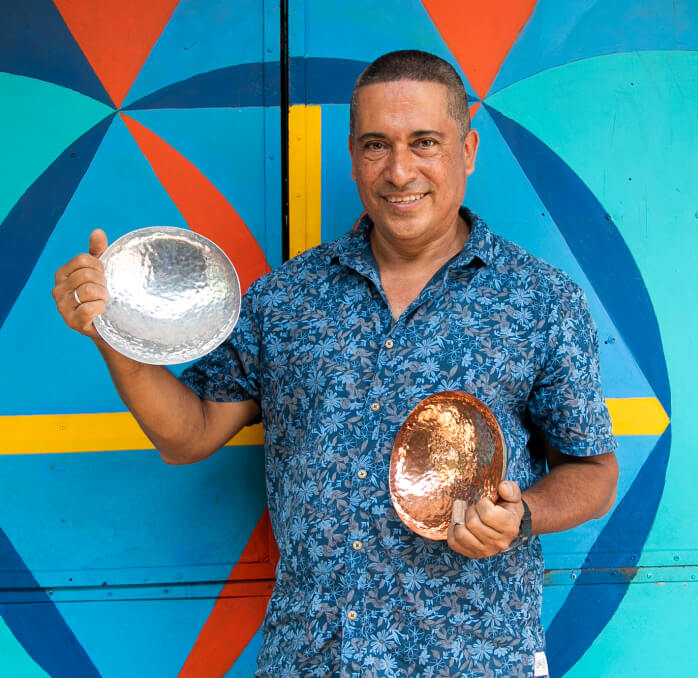Miguelia Chirimía
Workshop: Artesania Wounaan Den
Craft: Weaving
Trail: Valle del Cauca route
Location: Cali, Valle del Cauca
SCHEDULE YOUR VISIT
Imagine arriving in a city after a lifetime spent in a reservation along the banks of the San Juan River, and not knowing the language of this new place. Not being able to say “work”—perhaps the most important word in that moment for someone who needed to start earning a living to support herself and her children. Miguelia remembers those first days at Cali’s bus terminal in 2014 with perfect clarity. The knot in her tongue trying to speak but failing, the puzzled looks of people who couldn’t understand her. The laughter that came out in place of words each time someone spoke to her and she tried to reply. The fear of not knowing who to trust, how to get around the city, when to pull out the woven wérregue vases from her suitcase to offer them, or how much to sell them for. Ultimately, Miguelia hadn’t come to Cali by choice—because no one truly wants to leave their land—but had been forced to by displacement.
Those vases, which were all she had at the time, were, as she now knows, her power. A power passed down to her by her aunt, Urbina Ismare, who adopted her at age twelve and took her to live in the community of Burujón after her parents’ passing. Though she didn’t understand it as a child—and thought her aunt gave her so many chores just to save herself the trouble—today she knows they were all lessons for the future. That’s why Doña Urbina insisted Miguelia gather the wérregue and sit beside her—not only to learn how to turn it into vases, but also to master every household task. And that’s why, whenever she seemed distracted, her aunt would send her to bathe in the river to clear her mind so she could keep learning. Her favorite chore, in fact, was doing laundry—because every two pieces, she’d jump into the San Juan River to play in the water. The same water she’d bathe in at dawn, under the right moon, to ask for the power of knowledge. Today, she knows and gives thanks: she received the power of the moon and her aunt—the same power that allowed her to begin speaking and surviving in the city.
After a few days at the terminal, Piedad appeared—a woman Miguelia calls her angel. The only one who understood her, or at least made the effort to, and who took her to what would become her first place in Siloé. With Piedad, Miguelia began learning Spanish—and that’s how she learned to tell the men who offered her 5,000 pesos for her vases when she held up five fingers, that it wasn’t five, it was fifty thousand. Miguelia’s experience highlights the need to value the ancestral, artisanal labor of Indigenous peoples: you shouldn’t need a shared language to recognize the detail and knowledge embedded in every piece—in this case, every wérregue vase—and pay a fair price. To this is added the shift in her people’s way of life—people who once went to the forest to gather bananas, papa china, and pineapple, but who lost that freedom because of war, and who found in their vases a form of currency to trade for food.
It took no small effort to secure her current spot at the Loma de la Cruz Artisan Park. She began selling on the street—outside city hall, in the downtown area—and that’s how she first heard of the park. She went to see what it was, and though she wasn’t allowed to sell there the first time, she started asking those who already had stalls how to get one. She went to the office and asked God to help her learn enough Spanish to complete the process. It was, as she says, a constant rhythm of seeing and seeing. Saying she wanted to work, and seeing and seeing how to make the man in the office understand that what she wanted was a stall. Then came waiting for the call for applications, checking every week, and when it finally opened, seeing and seeing what documents were needed, going to the copy shop, and asking for help filling out the forms. Waiting for the text message—and then seeing and seeing how to keep the family fed in the meantime. Finally, receiving the message with the good news—but first, seeing and seeing who could read it to her.And though the first batch of vases she left at the stall were stolen, she figured out how to replace them with earrings and bracelets that sold faster, so she could restock her larger pieces—those admirable containers, filled with the designs of her people that she carries in her memory. More than ten years later, she knows she must protect and honor her power. Because it was through that knowledge that she’s been able to live in the city ever since, with her six children and her partner. And it was thanks to that power that she can now share with us her story—in Spanish.
Craft
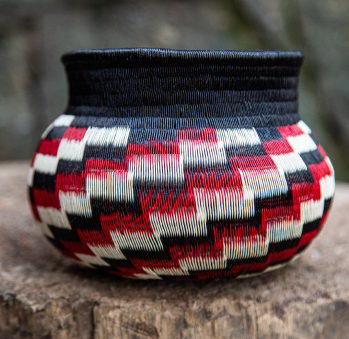
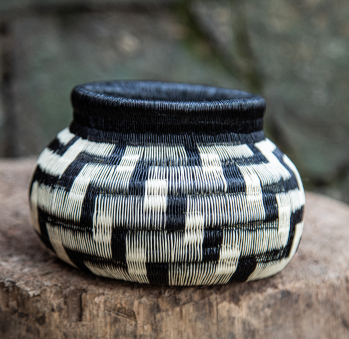
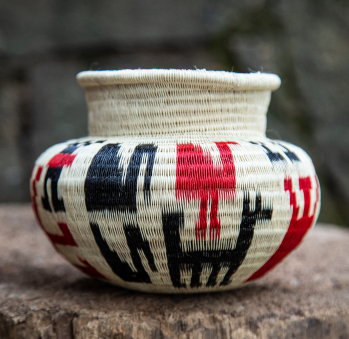
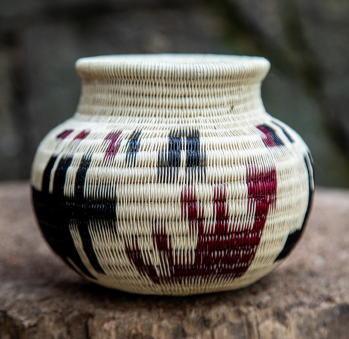
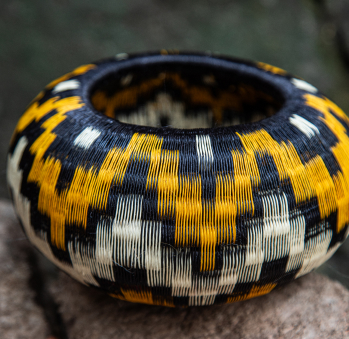
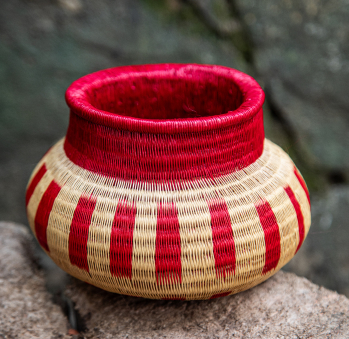
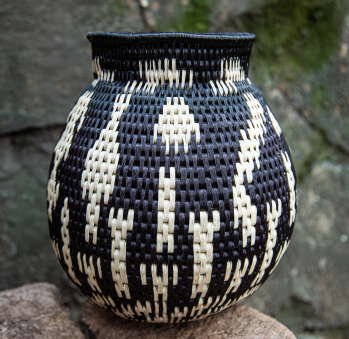
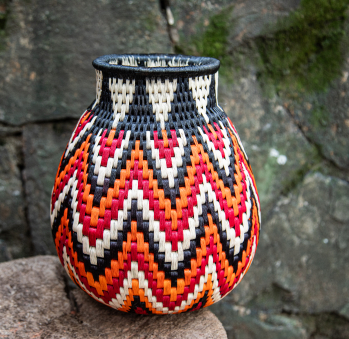
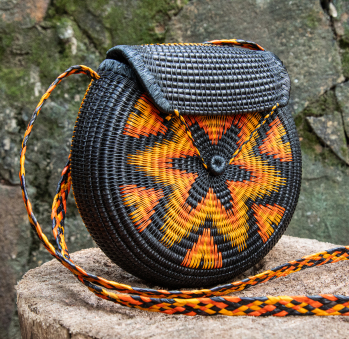









Artisans along the way
Artisans along the way
No puede copiar contenido de esta página

